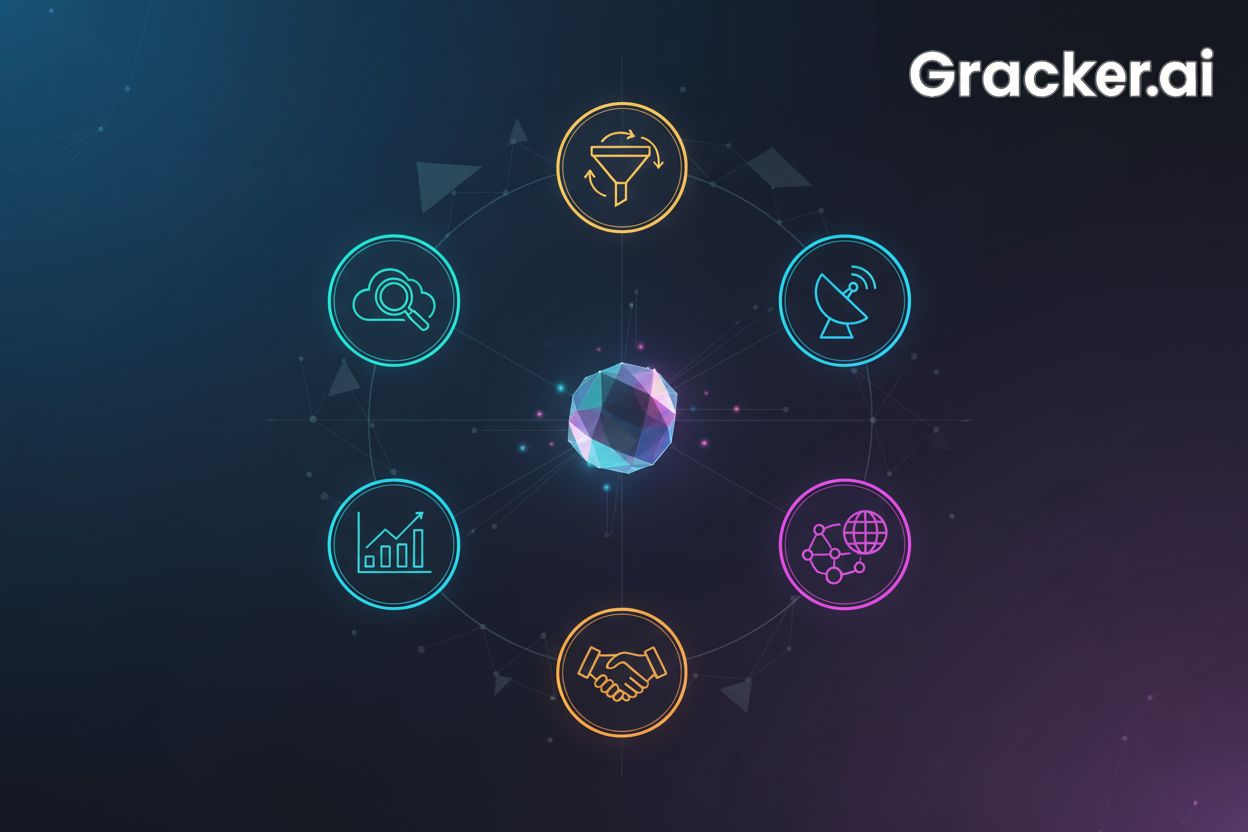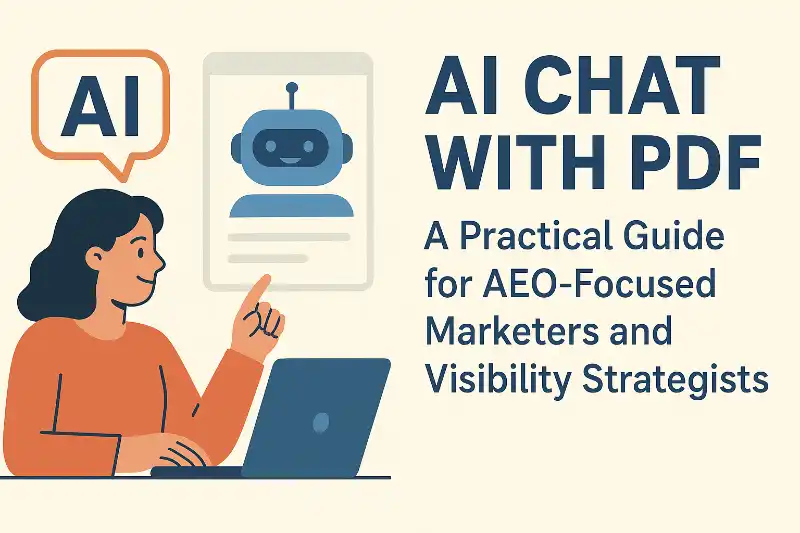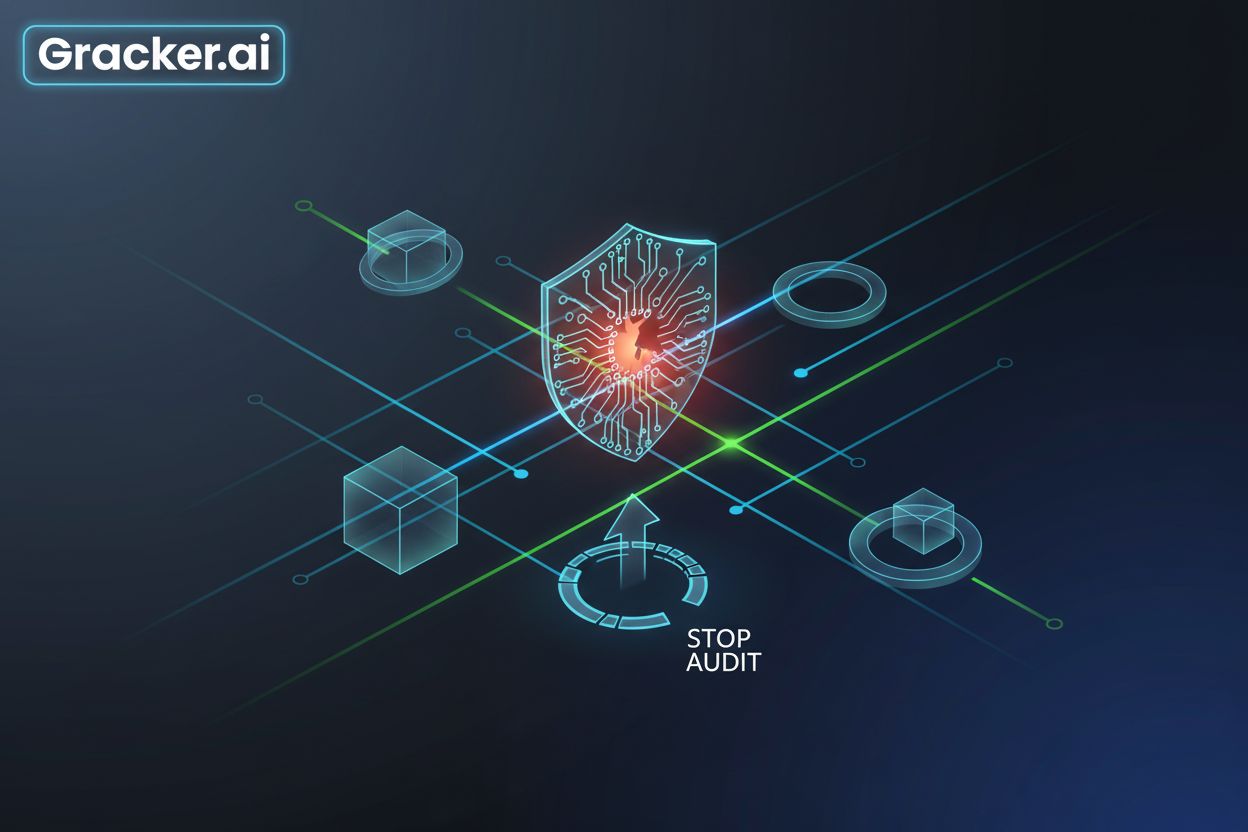SAP GRC Risk Management: A Practical Setup Guide for SoD, Workflows & Audit-Ready Reports

You’re staring at a new mandate: stand up SAP GRC Risk Management—and do it fast. We’ll walk you through a five-step plan to model risks, bake Segregation-of-Duties checks into every role, and spin up audit-ready dashboards in 30 days. If SAP already feels too heavy, first compare leading GRC platforms to confirm it’s the right fit. Ready? Your risk program goes live today.
SAP GRC risk management in a nutshell
Think of SAP GRC Risk Management as an airport control tower: it logs every potential hazard, scores likelihood × impact, and warns the right owner before a near-miss turns into a headline. The broader GRC market reflects the same demand for visibility, though from different angles. Vanta, for instance, emphasizes automating audit evidence collection so compliance teams spend less time on manual reporting and more time managing real risks. That focus on continuous evidence monitoring illustrates how GRC platforms tackle the same challenge with different priorities.
The module shares one org model, master-data layer, and workflow engine with Access Control and Process Control in SAP GRC 12.0, so a risk flagged here can trigger a control test there—keeping provisioning and quarterly audits on the same script.
While SAP offers a cloud-based solution called SAP Risk and Assurance Management, the on-premise SAP GRC suite has not been rebranded. The core components of the on-premise solution remain SAP Access Control, SAP Process Control, and SAP Risk Management. Whether you’re still on ECC or using the Fiori interface introduced in 12.0, you get a modern, web-style experience instead of classic NetWeaver.
Integration is the payoff:
● Access Control spots Segregation-of-Duties conflicts the moment a role is requested.
● Process Control checks that key safeguards still operate.
● Risk Management blends both signals into a single heat map so executives can weigh financial, operational, and access risks side by side.
If you’re still shortlisting tools, this platform comparison profiles automation, integrations, and AI strengths by vendor.
1. Define your risk structure and taxonomy
Start with the org chart you already trust for budgeting: company, division, and process. Import only the units that will own a control or a risk; you can add detail later.
Anchor your library to four to six high-level categories. COSO’s Enterprise Risk Management framework, for example, groups risks under Strategic, Operations, Reporting, and Compliance. Many teams add Financial or Technology to cover market and cyber threats, but anything beyond six labels clutters dashboards.
Write a one-line, plain-English definition for each category and use that wording in every form, training slide, and board pack. Consistency beats creativity when audit season arrives.
Nominate one taxonomy custodian, often the GRC manager, to approve new categories and merge duplicates. A 10-minute quarterly review prevents the bloat that makes reports fail.
With the skeleton locked, you can move on to scoring how severe each risk is.
2. Configure likelihood and impact scales
Most teams use a 5 × 5 matrix (five levels of likelihood and five of impact) because it offers enough detail without forcing people into minor distinctions. IEC 31010, the companion standard to ISO 31000, even presents a 5 × 5 grid as a reference risk-ranking technique.
1. Define each level in plain English.
Likelihood 1: “Rare: once every 10 years.”
Impact 5: “Catastrophic: bankruptcy-level loss or life-safety breach.”
2. Document the definitions next to every assessment form. Two managers scoring the same risk then agree whether “3 Medium” or “4 High” applies.
3. Set numeric breakpoints for overall risk. Many organizations treat any score above 15 (on a 25-point scale) as High or Critical, while 1–4 is Low. Adjust the thresholds to match your board’s risk appetite, then apply the same breakpoints in Access Control and Process Control so all three modules share one language.
Clear math keeps emotion out of the conversation and makes the red boxes on your heat map impossible to miss.

3. Build your risk register
ISO Guide 73, a foundational standard for risk management vocabulary, defined a risk register as 'a record of information about identified risks.' It's important to note that the successor to this guide, ISO 31073:2022, has since removed this term. In SAP, that repository lives in the Create Risk form. Populate it with disciplined consistency.
1. Run a one-hour discovery workshop. Ask each process owner one question: “What could stop us from meeting this quarter’s target?” Capture answers verbatim: fraud, system outage, GDPR fine, and SoD breach in purchasing.
2. Enter each item using these minimum fields:

1. Start small, with no more than 20 high-impact risks. Smaller sets keep dashboards readable and let owners learn the workflow before you add medium-priority items.
2. Assign an owner before you select Save. A risk without a name remains theoretical.
With your initial register in place, you can route those entries through assessment and scoring.
4. Weave SoD risks and firefighter access into the program
Segregation-of-Duties (SoD) conflicts. SAP delivers about 200 standard SoD rules in GRC Access Control, but activating all of them on day one overloads approvers and creates noise. Start with the 20–30 conflicts auditors pursue most: procure-to-pay, order-to-cash, and critical master-data maintenance.
1. Create a risk entry for each high-impact conflict.
Title: “P2P payment fraud via dual authority” is clearer than “Rule 2005.”
Owner: the business process lead, not IT.
2. Link the Access Request workflow (GRAC_REQ) to the risk owner. When GRAC_SOD analysis flags a conflict, the system routes the request for approval or documented mitigation. No compensating control, no approval.
Emergency Access Management (Firefighter IDs). Over-issuing firefighter IDs is a common audit finding; unrestricted use hides fraud in plain sight.
● Grant IDs only for tasks that cannot wait for normal provisioning.
● Review GRAC_EAM logs weekly; five business days is a typical control window cited by Big 4 auditors.
● Treat any spike, for example more than 10 firefighter sessions in a week, as its own risk indicator and trigger reassessment.
By funnelling SoD approvals and firefighter alerts into a single risk dashboard, you convert access jargon into metrics the CFO understands, and you keep fraud doors firmly shut.
5. Run the risk assessment workflow
SAP provides a three-step assessment workflow (risk owner → reviewer → committee). With recent updates in GRC 12.0, there is greater flexibility in configuring the risk assessment workflow, allowing for the activation or deactivation of individual steps to better suit organizational needs.
1. Launch the cycle from the Planner (Fiori tile “Manage Risk”). The system sends guided work items to each risk owner.
2. Set an SLA of five business days. Owners score likelihood, impact, and response (accept, mitigate, transfer, avoid).
3. Route high-risk items (score above 15 on the 25-point scale) to a second-level reviewer. Auto-close low-risk items to reduce inbox fatigue.
4. Require a brief justification for “Accept.” One sentence satisfies auditors.
5. Lock the snapshot once all tasks close, for example “Q1 2026 baseline.” Later cycles track movement and show whether controls work or risks drift.
Clear SLAs and a consistent snapshot name convert a one-time questionnaire into a living feedback loop executives trust.
6. Map mitigation plans to real controls
SAP’s Risk Harmonization feature lets you assign a control from Process Control directly to a risk in Risk Management. One update changes both records. Use that link to keep a single source of truth.
1. Attach an existing control.
● Fiori path: Risk Management → Manage Risk → Responses → Add Existing Control.
● Enter the PC Control ID; the system creates the cross-reference, so you avoid duplicate maintenance.
1. Create a mitigation plan when no control exists. Write it in verb + outcome form. Example: “Introduce dual approval for manual payments by December 31, 2025.”
● Assign an owner and a due date.
● Set the status flag so GRC can trigger reminders.
1. Prove the control works. Draft a simple three-step test script (for example, sample five transactions, verify second-level sign-off, document evidence). Store the proof in the Attachments tab; auditors will request it.
2. Review every plan every 90 days. Close items that are complete, merge duplicates, and update slipped due dates.
Live controls plus documented evidence turn a Mitigate button click into a defence your auditor can verify in minutes.
7. Monitor risks with smart KRIs
The Institute of Operational Risk defines a Key Risk Indicator (KRI) as “a metric that signals the level of exposure associated with a specific activity, process or system.” In SAP GRC you maintain KRIs under Risk Management → Define Key Risk Indicators.
1. Pick one or two lead indicators for each critical risk.
Payment-fraud risk: Manual payment overrides per month (source table BKPF)
SAP outage risk: Unresolved incident minutes greater than 15 (source ITSM)
2. Set data-driven thresholds. Use last year’s baseline plus a safety margin. For example, if the AP team averaged six overrides a month, place the yellow alert at 8 and the red alert at 10. Record the logic next to the KRI so auditors can trace the maths.
3. Automate collection when possible. A simple RFC or OData feed can update the KRI nightly; manual entry should be rare.
4. Review trends every 30 days. Any breach sends an email to the risk owner and stamps the event on the risk timeline.
5. Retire flat-line indicators. A KRI that stays static adds no insight. Replace it with a fresher metric after two consecutive quarters of inactivity.
KRIs that are clear, automated, and reviewed on schedule turn Risk Management from a quarterly snapshot into real-time radar.
8. Test and refine your setup
Run a full dress rehearsal in your QA client before you move Risk Management to production:
1. Create a dummy risk and push it through assessment. Link a control, trigger a KRI breach, and export the heat map.
2. Validate the audit pack. Hand the PDF bundle to an internal auditor and ask one question: “Could you sign off today?” Capture every gap.
3. Hold a 60-minute retrospective within five business days. Collect feedback from risk owners on form clarity and workflow speed, then log fixes in a shared backlog.
4. Set measurable adoption targets for the next cycle: at least 90 percent of risks assessed on time and fewer than five workflow escalations.
5. Schedule a six-month optimisation checkpoint to merge duplicate controls, retire stale risks, and tune KRI thresholds.
Consistent iteration turns a configured module into a mature risk program and lets you catch issues in QA before they reach the boardroom.
Make SoD workflows part of your risk program
SAP delivers about 200 standard SoD conflicts in Access Control, but turning them all on at once overloads approvers and hides real issues. Begin with the 20 to 30 conflicts auditors request first: procure-to-pay, order-to-cash, and critical master-data maintenance.
How one conflict travels

1. A buyer requests a role in GRAC_REQ that also approves payments.
2. GRAC_SOD analysis flags a High conflict and routes the request to the process owner listed as the risk owner in Risk Management.
3. The owner either rejects the role or approves it with a compensating control (for example, a monthly override report review).
4. The approval decision and Mitigating Control ID are stored in both modules, giving auditors one traceable record.
Keep firefighter access (EAM) tight
Too many Firefighter IDs weaken the control; auditors often cite this as a finding.
● Grant IDs only for tasks that cannot wait for normal provisioning.
● Review GRAC_EAM logs within five business days of each use; capture the review outcome as evidence in Risk Management.
● Treat any week with more than ten firefighter sessions as a risk indicator that triggers reassessment of the underlying process or role design.
By routing SoD approvals and firefighter alerts into one dashboard, you convert access-control jargon into clear business metrics the CFO and audit committee can act on.
Reporting and audit-ready outputs
Executives and auditors trust data they can trace. SAP GRC ships several built-in reports that cover about 90 percent of what auditors request.

Export the PDFs, bundle them with meeting minutes, and archive the folder within five business days after quarter-close. Under SEC Rule 2-06 (Sarbanes-Oxley section 802), evidence that supports internal-control assertions must be retained for seven years.
Quarter-end checklist
● All High risks reviewed in the last 90 days
● Every “Accept” decision includes a documented rationale
● Failed controls triggered reassessment and follow-up actions
● Open SoD conflicts have active mitigating controls
● Firefighter log reviews show no unresolved critical events
Completing this list before the auditors arrive turns fieldwork into confirmation, not discovery.
Common pitfalls and how to dodge them
Pitfall 1: Activating every delivered SoD rule. SAP ships about 200 standard conflicts. Turn them all on and the approvers drown in noise. Start with the 20 to 30 conflicts auditors ask for first, then add ten more each quarter once false-positive rates fall below fifteen percent.
Pitfall 2: Letting Firefighter IDs multiply. Emergency access is surgical, not routine. Limit IDs to fewer than one percent of total users and review GRAC_EAM logs within five business days of each session.
Pitfall 3: Treating the tool as a checkbox. A green dashboard means nothing if an incident proves the control was never executed. Track the control-failure rate (under five percent per quarter) and require root-cause analysis for each miss.
Pitfall 4: Taxonomy bloat. New categories feel productive until reports split the same threat across three labels. One custodian should approve additions and retire duplicates every ninety days; aim for no more than ten top-level categories.
Pitfall 5: Undocumented changes. Disabling a standard risk or downgrading its rating without a note is audit fuel. Make “why, who, when” mandatory fields, and configure the system to block status changes that lack a comment.
Spot these traps early and your program stays lean, credible, and auditor-friendly.
FAQs – SAP GRC risk management
What is SAP GRC Risk Management used for?
It is the module that consolidates risk identification, scoring, and monitoring in one repository, which eliminates ad-hoc spreadsheets and gives executives a live heat map of enterprise threats (SAP GRC 12.0 Release Notes, 2024).How does it link to Access Control and Process Control?
● Access Control (AC) feeds Segregation-of-Duties violations and emergency-access logs into the risk register.
● Process Control (PC) supplies control-test results; a failed key control automatically raises the related risk’s residual score.
All three modules share the same organisation model and workflow engine, so data stays in sync across user provisioning, controls, and risk dashboards.What are the core steps in the SAP risk lifecycle?
1. Define taxonomy
2. Identify risks
3. Score likelihood × impact (often a 5 × 5 matrix)
4. Select a response: accept, mitigate, transfer, or avoid
5. Monitor with KRIs and quarterly reassessments
The loop repeats every reporting period, so the board reviews fresh data each quarter.What exactly is an SoD risk, and how do we tame it?
An SoD risk exists when one user can execute incompatible tasks (for example, create and pay a vendor). AC flags the conflict; the risk owner approves, rejects, or mitigates it through a compensating control such as a monthly override review. The decision and control ID are stored in Risk Management for audit traceability.How do I create audit evidence in a hurry?
Run the built-in reports Risk Overview (heat map), RMRESP_RISK_LIST (High and Very High risks with owners), and GRAC_SOD_MIT_REP (SoD conflicts with mitigating controls). Export to PDF, attach the latest meeting minutes, and archive the pack within five business days after quarter-end to meet SOX 802’s seven-year retention rule.
Wrapping up and moving forward
You now have a working blueprint for SAP GRC Risk Management, a single repository that joins user access, business controls, and real-time dashboards.
1. Start small and measure uptake. Aim for at least 90 percent of high-risk items assessed on time in the first quarter.
2. Revisit the setup every 90 days. COSO’s monitoring principle calls for quarterly reviews to keep data current and controls effective.
3. Expand in sprints. Add 10–15 new SoD rules or KRIs only after the previous set shows false-positive rates below 15 percent.
4. Embed the data in decision-making. Put the heat map on the board agenda and investigate any KRI breach within 24 hours.





